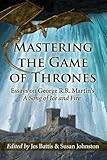Have you ever felt completely outmatched in a game, like you were playing checkers while your opponent was playing chess? That’s the feeling of being unprepared for a different playstyle. Whether it’s a board game, a sport, or even a business negotiation, understanding how to strategically prepare for different opponent playstyles is crucial for success. It’s not just about knowing your own strengths; it’s about anticipating your opponent’s moves and adapting your strategy accordingly.
Understanding the Importance of Adaptability
The key to winning against diverse opponents isn’t having one perfect strategy, but rather a flexible approach. Like a chameleon adapting to its surroundings, you must be able to shift your tactics based on the opponent you face. This requires not only recognizing different playstyles but also understanding their strengths, weaknesses, and common tendencies.
Identifying Different Playstyles
Opponents can be broadly categorized into several playstyles:
- Aggressive: These players favor high-risk, high-reward strategies. They often prioritize offense over defense and aim for quick victories. Think of a blitzing chess player or a rush-down character in a fighting game.
- Defensive: These players prioritize minimizing losses and capitalizing on their opponent’s mistakes. They’re patient and methodical, often wearing down their opponents over time. Think of a turtling strategy in real-time strategy games.
- Passive-Aggressive: These players blend elements of both aggression and defense. They may appear passive initially, but they’re constantly looking for opportunities to exploit weaknesses and launch calculated attacks.
- Analytical: These players are strategic thinkers who carefully analyze the situation before making a move. They prioritize long-term planning and try to outmaneuver their opponents. They often excel at games with complex mechanics.
- Unpredictable: These players are difficult to read because their actions don’t follow a clear pattern. They may switch between different playstyles or employ unconventional tactics.
 Adapting to Different Playstyles
Adapting to Different Playstyles
Developing Strategies for Different Playstyles
Once you’ve identified your opponent’s playstyle, you can begin to formulate a counter-strategy.
Countering Aggressive Players
Against aggressive players, patience is key. Don’t get drawn into their fast-paced game. Focus on defense, capitalize on their mistakes, and wait for an opportunity to strike. As Sun Tzu said in The Art of War, “Speed is the essence of war, but haste makes waste.”
Countering Defensive Players
Against defensive players, you need to be proactive. Don’t wait for them to make a mistake; create opportunities. Force them to react to your actions and break their defensive posture. Consider a quote attributed to General George S. Patton: “A good plan violently executed now is better than a perfect plan executed next week.”
Countering Passive-Aggressive Players
Passive-aggressive players require a combination of patience and assertiveness. Be prepared for them to shift gears suddenly. Don’t be afraid to take calculated risks, but also be mindful of potential traps. A relevant analogy could be drawn from poker, where reading your opponent’s subtle cues is crucial.
Countering Analytical Players
Against analytical players, disrupt their plans. Introduce unpredictability into your game and force them to adapt on the fly. A chess master once said, “The winner of the game is the one who makes the next-to-last mistake.” Try to exploit their tendency to overthink.
Countering Unpredictable Players
Unpredictable players are the most challenging to face. The best approach is to focus on your own game and adapt as you go. Observe their patterns, even if they seem random, and try to anticipate their next move. Flexibility and quick thinking are essential.
Practical Tips for Preparation
- Research: Study your opponents if possible. Watch recordings of their previous games or analyze their past performance.
- Practice: Train against different playstyles to develop your adaptability. Sparring partners or online opponents can provide valuable experience.
- Self-Analysis: Understand your own strengths and weaknesses. Knowing your limitations will help you avoid situations where you are at a disadvantage.
- Mental Fortitude: Maintain a positive attitude and stay focused, regardless of your opponent’s tactics. Don’t let their playstyle dictate your emotions.
Conclusion
Strategically preparing for different opponent playstyles is a continuous process of learning, adapting, and refining your approach. By understanding the different types of players you might encounter and developing counter-strategies, you can significantly increase your chances of success in any competitive environment. Remember, victory favors the prepared. Don’t just play the game; master the art of anticipation and adaptability. Share your experiences and thoughts in the comments below. Let’s learn from each other and elevate our game together!
- Martin, Gilbert (Author)
- English (Publication Language)
- Bussgang, Jeffrey (Author)
- English (Publication Language)
- Used Book in Good Condition
- Hardcover Book
- Hardcover Book
- Lardon, Michael (Author)
- Audible Audiobook
- Tony Robbins (Author) - Tony Robbins, Jeremy Bobb (Narrators)
- Hardcover Book
- Saglam, Ismail (Author)
- Provides golfers with simple yet powerful techniques to prepare for, execute, and respond to the results of any golf shot
- Demonstrates how to make one's mind an ally instead of an enemy by applying classic insight and stories from the Buddhist tradition
- Dylan Linde (Author)
- English (Publication Language)
- English (Publication Language)
- 308 Pages - 01/22/2015 (Publication Date) - McFarland & Company (Publisher)
- Dunsky, Michael (Author)
- English (Publication Language)









